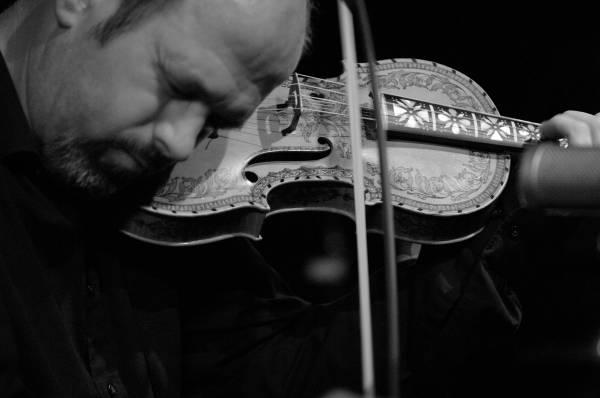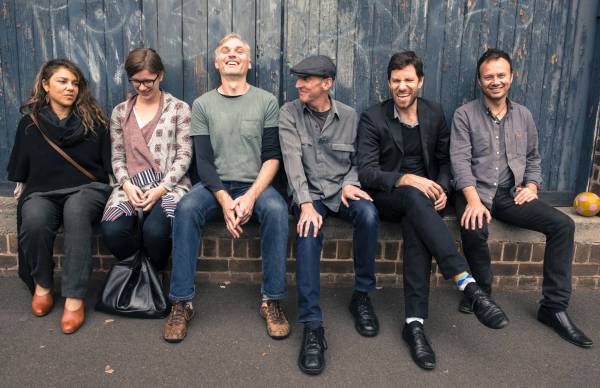
Keith Jarrett: Creation (ECM) 8/10
Nils Okland Band: Kjolvatn (ECM) 9/10
Colm Mac Con Iomaire: And Now The Weather (Plateau/Planet) 7/10
Paul Cutlan: Across the Top (Tall Poppies) 8/10
Music genres might not quite be, as our former prime minister would have it, “dead, buried and cremated”, but they are certainly starting to smell funny. Much of the most interesting music now being made falls outside of them, despite the number of genres having never been greater. Had you walked into a record store prior to 1955’s rock’n’roll explosion, for instance, you would have found racks of classical, jazz, musicals, popular song and perhaps opera. Half a century later (before such stores began to be strangled by the on-line vine), you’d have also found early music, country, folk, blues, r’n’b, techno, hip hop, various forms of rock, several types of bespoke dance music and 50 types of world music.
But just as the more sides you add to a polygon the closer you come to a circle, the more genres and sub-genres you add to music the closer you get to their irrelevance; to their cancelling each out until you are left with what Duke Ellington famously referred to as the only two types of music: good and bad.
Besides the surge in their number, the relevance of genres has been compromised by the lines between them being smudged beyond recognition. Contributing to this has been the pillaging of indigenous idioms from around the world and the spread of a shared improvising language, largely emanating from jazz, allowing musicians of all stripes to collaborate.
The beginnings of the demise of genre can be traced back to the 1960s, when jazz and rock musicians began looking for broader rhythmic, textural, structural and conceptual palettes, and therefore borrowed from each other, from classical composition and from many types of traditional music. Jazz saxophonist John Coltrane, for instance, embraced Indian concepts of improvisation, and George Harrison’s Within You Without You on Sergeant Pepper’s exposed a willing western audience to the sounds and textures of Hindustani classical music. Fusion obliterated the line between jazz and rock, while progressive rock yearned for the sweep and grandeur of classical music.

Among recent examples of category-defying music is Keith Jarrett’s latest album of solo piano, Creation. The nine improvisations share an uncanny sense of formal compositional structure, with Part I immediately taking its place in the pantheon of Jarrett’s finest work. Sparse, dramatic and loaded with foreboding, it has a rare precision of improvised architecture and a mood reminiscent of Rachmaninov’s Isle of the Dead. It may well be his darkest piece, and as far from jazz rhythmically and harmonically as he has been in his improvising. By contrast Part II has the innocence of a children’s song, and Part III is somewhat like a jazz ballad, with both also attaining a rare exactitude of structure. If Part V is less substantial, VII is a stunning creations in terms of beauty and drama. Although this album may not rate with Rio for breathtaking invention, Jarrett’s improvised forms are nothing short of wondrous.

Nils Okland was last reviewed in these pages for the striking Lumen Drones album made with members of the Norwegian rock group the Low Frequency in Stereo. Here he investigates diverse compositional ideas through a prism of Nordic folk and early music, his primary instrument being the hardanger (traditional Norwegian fiddle). Okland’s melodic fragments are developed via improvisation, with the resultant music variously sounding anything from Turkish to Baroque, and always rather stately and sad, like a decaying mansion with many secret rooms. Okland, who also plays viola d’amore and violin, has an ensemble of saxophone, harmonium, bass and percussion (including vibraphone), and imaginative playing in this entirely borderless music ensures the formality is overlaid with an enthralling eeriness, as though that mansion is also haunted.

The new album from Colm Mac Con Iomaire, fiddler in the beloved Irish rock band the Frames, is almost as hard to pigeonhole. He has spoken of the dichotomy he felt when growing up between Irish traditional music and other music, and And Now The Weather braids the two together with an invisible seam. Despite the results not being as momentous as the Gloaming’s extraordinary eponymous debut, a sense of mystery shrouds the simplicity of Mac Con Iomaire’s compositions, which are often filmic and rather pastoral: sonic depictions of Arcadia, if you like. While one or two tracks flirt with tweeness, most are open-hearted and replete with charm, the leader’s violin, viola, sultana, guitar, Dobro, bouzouki, ukulele, banjo, cello, piano and zither joined by a cast of 21 collaborators.
The breadth of Paul Cutlan’s horizons are reflected in past associations ranging from the Sydney Symphony Orchestra to Lou Reed, and Diary of a Madman (with Geoffrey Rush) to Ruby Hunter and Ten Part Invention. Here he says he sought to marry influences from Bartok, Stravinsky, Shostakovich and Britten with Balkan folk and improvisation. Hybrids can be mongrels, but Cutlan’s works are refreshingly original, and exude a consequent vitality. He has scored them for string quartet, his own bass clarinet and soprano saxophone and Brett Hirst’s bass. Crucial to the project’s success is that the quartet is the Noise, whose members are all improvisers, which Cutlan exploits to marvellous effect.
The centrepiece is the 32-minute Across the Top Suite, which includes the thrilling Lost Souls (with Mara Kiek guesting on tapan). Throughout the album the composing and improvising are of equal merit – some achievement for such an ambitious, genre-defying project.